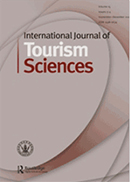How do Chinese tourists differ from Caucasian tourists? An empirical study from the perspective of tourists’ self-concept
How do Chinese tourists differ from Caucasian tourists? An empirical study from the perspective of tourists’ self-concept
- 한국관광학회
- International Journal of Tourism Science
- Vol.16 No.4
-
2016.11222 - 237 (16 pages)
-
DOI : 10.1080/15980634.2016.1257868
- 0

This paper explores the ability of self-concept to differentiate between the travel behaviours, travel patterns and motives of Chinese and Caucasian tourists. Using data collected from a survey in 2012 by an Ontario government agency, an exploratory factor analysis was used to reveal differences in self-concept between Chinese and Caucasian tourists. Results indicate a three-factor structure for Chinese tourists (assurance-self, extrovert-self and pressure-self ) and a four-factor structure for Caucasian tourists (extrovert-self, explorative-self, assurance-self and pressure-self ). Despite overlap in the factor structure, significant differences are noted in the amount of variance explained by each factor. Findings suggest that there may be significant differences between the two segments on planning and preparedness for overnight trips. Differences are noted between being pragmatic versus exploration for the sake of exploration, but not in using overnight trips to achieve rest and recovery from stress. This study contributes to cross-cultural studies in tourism research through its consideration of self-concept as a travel behaviour differentiator. Furthermore, this study extends the application of selfconcept towards further understanding of tourist experiences from the perspective of self-congruity theory. Strategies to attract both Chinese and Caucasian tourists are discussed.
Introduction
Literature review
Methodology
Findings
Discussion
Conclusion
Disclosure statement
References
(0)
(0)